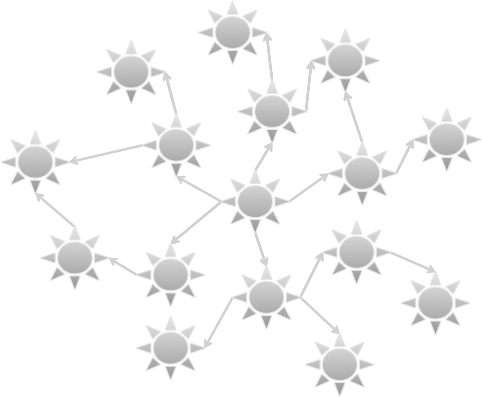GO VIRAL
At SAS we had some early adopters spreading the news on the platform really quickly, which then lead to our social media platform going viral (see Exhibit 5.1).
Exhibit 5.1 The Snowball Effect of Going Viral

One of the key features of social networks is some type of connection, either one-directional or bi-directional. On Facebook it is called “friendship,” on LinkedIn it is called “connection,” and on Twitter it is called “following.” Those relationships are what weaves the network. Let’s take an example from Twitter, one of the networks known for being the backbone of many viral incidents. If I have 600 Twitter followers and I send out a tweet (a short 140-character message), those 600 will be able to read it. How many of my followers will actually read the tweet depends on how many people they follow, how often they check their Twitter streams, and what their key interests are. But let’s say for the example that my tweet is very interesting for a large portion of my followers and 200 of them do actually read it. One of the easy features of Twitter is retweeting, which means you take a message and repost it to your followers. So, of the 200 there might be 50 that find it interesting enough to do that. If any of those 50 have followers—and some of them might be very popular and have thousands of followers—my message could be retweeted exponentially. This means that thousands ...
Get Connecting Organizational Silos: Taking Knowledge Flow Management to the Next Level with Social Media now with the O’Reilly learning platform.
O’Reilly members experience books, live events, courses curated by job role, and more from O’Reilly and nearly 200 top publishers.

